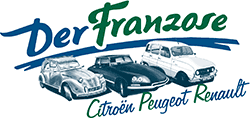45 Years Mehari - The Mehari: an icon of 1968
 May 1968 was an epoch-changing period in French history. It was a time of rebellion, freedom and creativity, and lightness. Four words that aptly describe the CITROËN Méhari.
May 1968 was an epoch-changing period in French history. It was a time of rebellion, freedom and creativity, and lightness. Four words that aptly describe the CITROËN Méhari.
The Méhari, then known as the Diane 6 Méhari, was revealed on 16 May 1968 at the Deauville golf course, surprising the public with its:
- unusual concept. A pretension-free car built for utility and pleasure, equally at ease transporting hay or surfboards, the Méhari also carried over the versatility and economy of the 2CV while featuring more contemporary materials;
- name. “Méhari” is the word used in North Africa and the Sahara for dromedary camels, whose speed and endurance makes them ideal for riding. In short, a frugal animal with staying power and perfect for all occasions, transporting people and goods;
- original layout. To spell out the multiple uses of the new vehicle, 20 dummies were positioned around the models on show, dressed as farmers, firemen, adventurers and even swimmers, all of them colourcoded with the Méharis.
The CITROËN Méhari, created by Roland de La Poype, innovated with its body, moulded in ABS (Acrylonitrile butadiene styrene) plastic and dyed in the mass. The new lightweight material was extremely malleable and could be vividly coloured. The Méhari’s other key characteristic was that it could be fully opened above the waistline, including the windscreen, which folded down onto the bonnet.
With its raised chassis and plastic body, the Méhari could go just about anywhere, especially the 4WD version launched in 1979, and could negotiate inclines of up to 60°. The freedom it offered drivers has never been equalled.
The CITROËN Méhari has a particularly strong appeal. It enjoyed a major career in film, notably starring in Le gendarme de Saint Tropez, and on roads around the world (Liége-Dakar-Liège rally in 1969, Paris-Kabul-Paris rally in 1970, Paris-Persepolis-Paris rally in 1971 and medical assistance at the 1980 Paris-Dakar). It even became a loyal partner of the French army and national gendarmerie, since its lightness and all-road abilities made it easily “parachutable”.
In its 19-year career, the Méhari was released in just two special series models, in 1983: the Méhari Beach (Spain) and the better-known Méhari Azur (France, Italy and Portugal), a white model with blue doors, grille, canvas roof and headlamp surrounds, plus white-and-blue striped seats. Other models informed by the same philosophy were assembled by CITROËN, including the Baby-Brousse, Pony, Dalat and FAF.
Produced in nearly 150,000 units from 1968 to 1987, the CITROËN Méhari remains a true phenomenon in automotive history.
To celebrate its 45th birthday, the Brand is cordoning off a Méhari area at C_42 on Thursday 16 May from 9 am to midday for a special press conference. Participants will get to look back at key moments in the car’s launch and take a Méhari for a short spin around Paris.
© CITROËN DEUTSCHLAND









































